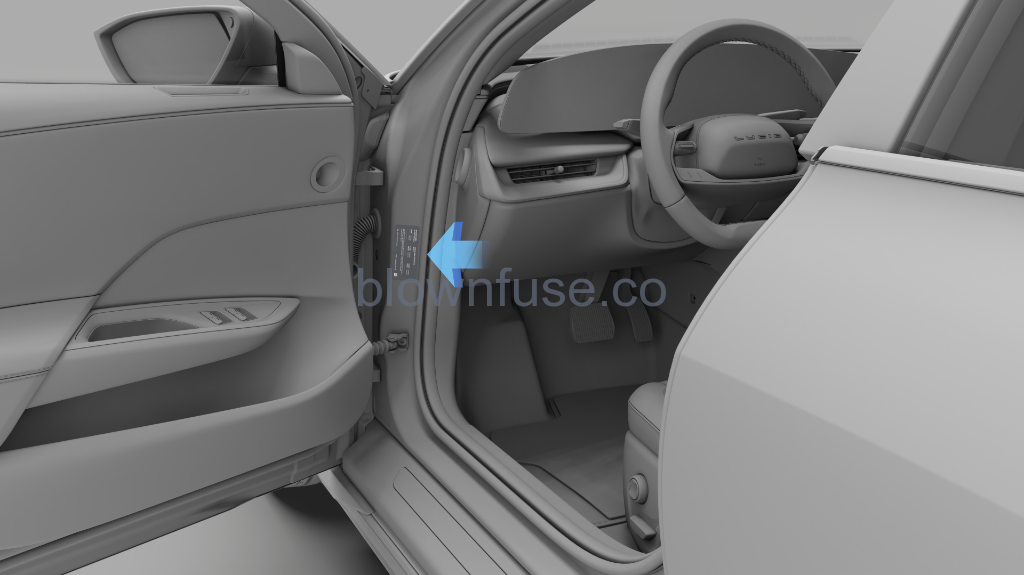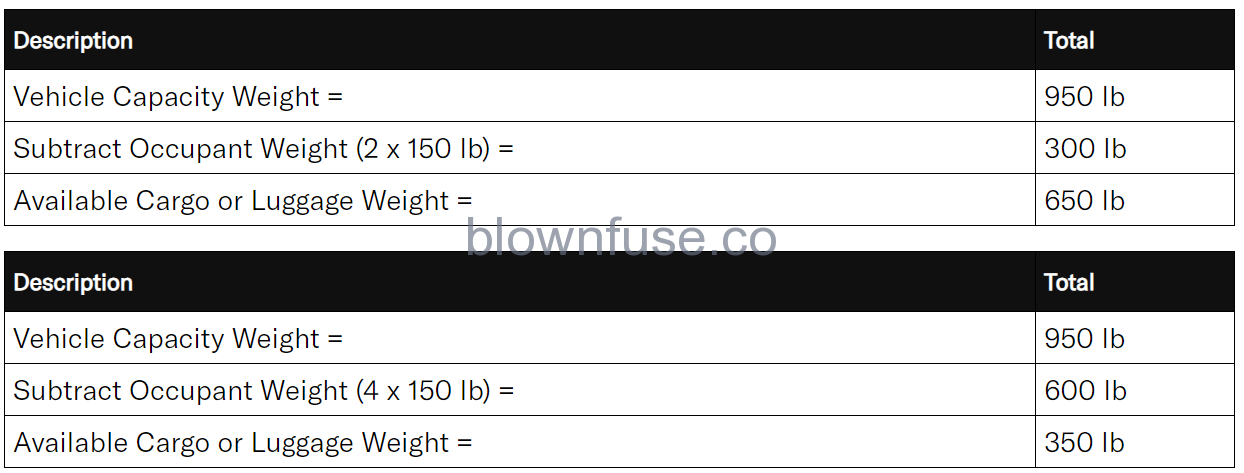2022 Lucid Air Vehicle Loading

Loading the Vehicle
WARNING: Overloading the vehicle has an adverse effect on braking and handling characteristics, which can compromise your safety or damage the vehicle.
It is important to understand the maximum weight rating for your vehicle and how much weight your vehicle can safely carry.
See the vehicle certification label located on the driver side front door jamb, by the front wheel, for the maximum load for your vehicle.vehicle’s Gross Vehicle Weight Rating (GVWR)
NOTE: Gross Vehicle Weight Rating (GVWR) is also known as the total allowable mass of the vehicle. This weight includes the vehicle’s curb weight, all occupants, cargo, and any additional equipment installed on the vehicle since it was manufactured.
CAUTION: To prevent severe damage to the vehicle, never load the vehicle to be heavier than the GVWR.
Carrying items
- WARNING: The frunk and trunk are the preferred places to carry objects. In an accident, during hard braking, or sudden maneuvers, loose items carried in the vehicle’s cabin area can be thrown around and cause injury to Occupants.
- CAUTION: Heavy loads should be evenly distributed throughout the vehicle so as not to exceed the Gross Axle Weight Ratings (GAWR) shown on the vehicle certification label. Refer to the tire information and loading label in the next section to determine the recommended maximum allowable weight that can be added to the vehicle to safely operate it and not damage the vehicle.
Towing a trailer
WARNING: Do not tow a trailer with your vehicle. The vehicle has not been designed to have a trailer hitch fitted to it. The installation of a trailer hitch may cause serious damage to the vehicle, which could result in an accident or serious injury.
Steps for Determining Correct Load Limit
- Locate the statement “The combined weight of occupants and cargo should never exceed xx kg or xx lb” on your vehicle’s placard (Tire information and loading label).
- Determine the combined weight of the driver and passengers that will be riding in your vehicle.
- Subtract the combined weight of the driver and passengers from the never exceed weight identified in step 1.
- The resulting figure equals the available amount of cargo and luggage load capacity. For example, if the total amount equals 950 lb, and there will be five 150 lb passengers in the vehicle, the amount of available cargo and luggage capacity is 200 Ib (950-750 (5×150) = 200 b).
- Determine the combined weight of luggage and cargo being loaded on the vehicle. That weight may not safely exceed the available cargo and luggage load capacity calculated in Step 4.
Example load limit calculations
The number and weight of passengers will affect the weight of available cargo and luggage load capacity.
The following are typical examples of calculated load limits.
NOTE: Calculations for the available cargo and luggage capacity assume that the passengers weigh 150 lb. If the passengers weigh more than this, the available cargo and luggage load capacity will decrease.

